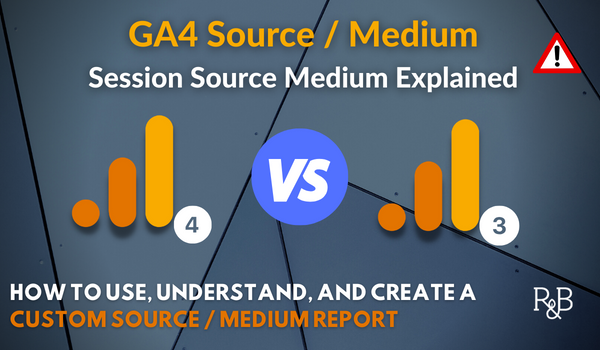Unveiling the Influence of Second Dimension in Google Analytics on Information Analysis and Insights
In the realm of information analytics, the use of additional measurements within Google Analytics has emerged as a critical tool for removing deeper understandings and unraveling complicated patterns that may or else remain obscured. By peeling back the layers of key data sets, secondary measurements offer a nuanced viewpoint that improves the understanding of user behavior, internet site efficiency, and the performance of marketing techniques.
Checking Out the Principle of Second Dimensions
Second dimensions in Google Analytics supply added understandings by permitting customers to analyze key information combined with an additional attribute. This function enables an extra comprehensive understanding of the key information by including one more layer of info for analysis. By integrating second measurements, customers can delve much deeper right into the data and uncover useful connections that might otherwise go undetected. For example, by pairing the primary data of web site web traffic with additional measurements like demographics or habits, online marketers can acquire an extra extensive sight of their audience and customize their strategies appropriately.
Recognizing the concept of second dimensions is crucial for taking full advantage of the possibility of Google Analytics. It enables users to section information efficiently, determine patterns, and make educated choices based on a more total photo of their analytics information. By exploring the various additional measurements available in Google Analytics, users can open new understandings and enhance their electronic marketing efforts. Basically, secondary measurements act as a powerful tool for boosting information analysis and driving actionable results.
Enhancing Data Interpretation With Additional Dimensions
Having actually developed the fundamental understanding of second dimensions in Google Analytics and their pivotal duty in data analysis, the focus currently moves towards leveraging these secondary characteristics to improve the interpretation of analytics information (what is a secondary dimension in google analytics). By integrating secondary measurements right into data analysis, experts can gain much deeper understandings into user behavior, site efficiency, and advertising performance

Furthermore, secondary measurements help in contextualizing key information metrics by giving extra layers of information. This contextualization help in recognizing the 'why' behind the data patterns, helping analysts make informed optimizations and choices to boost general performance. Ultimately, including second measurements improves the data interpretation procedure, bring about more tactical activities and purposeful insights.
Uncovering Hidden Insights With Secondary Measurements
Checking out the midsts of analytics information with secondary measurements reveals beneficial insights that would certainly otherwise continue to be obscured. By including additional measurements in Google Analytics, services can unearth surprise patterns, patterns, and relationships that supply a more comprehensive understanding of individual habits and internet site efficiency. These added layers of data enable experts to dive deeper into the main measurements, such as traffic resources or touchdown web pages, and gain an extra nuanced perspective on exactly how various variables engage with each other.
Through the usage of second dimensions, experts can section and contrast information across different measurements, enabling them to identify details factors that influence customer involvement, conversion prices, and total success metrics. By coupling the main dimension of 'tool group' with the secondary measurement of 'age team,' marketers can identify which age demographics choose accessing the web site with mobile tools versus desktop computers.
Leveraging Additional Measurements for Actionable Analytics
Building upon the understandings unveiled with additional measurements in Google Analytics, businesses can now harness this enriched data landscape to drive workable analytics and strategic decision-making. By leveraging secondary measurements, companies can dig much deeper right into their information to extract useful patterns, fads, and correlations that might have formerly gone undetected. This much deeper degree of evaluation allows companies to get an extra detailed understanding of individual habits, campaign efficiency, and general website performance.
One trick benefit of utilizing secondary special info measurements for actionable analytics is the capacity to segment information based on details standards. This segmentation enables businesses to customize their campaigns and approaches to different target market see this site teams, resulting in a lot more targeted and reliable advertising initiatives - what is a secondary dimension in google analytics. Furthermore, secondary measurements give a more all natural view of individual communications, making it possible for services to maximize their website web content, style, and overall customer experience
Making Best Use Of Decision-Making With Second Dimensions
To enhance strategic decision-making in analytics, leveraging second measurements in Google Analytics can give an extra nuanced viewpoint on individual actions and campaign efficiency. By integrating secondary dimensions into information analysis, organizations can delve deeper right into the specifics of their site site visitors' interactions and interaction patterns. This added layer of details permits a more detailed understanding of exactly how various variables, such as demographics, tools, or website traffic sources, effect key performance signs.

Final Thought
In conclusion, making use of second dimensions in Google Analytics plays a crucial function in enhancing information evaluation and revealing concealed insights. By discovering this principle, one can acquire a deeper understanding of user habits and make educated choices based upon workable analytics. Leveraging additional Find Out More dimensions enables a more comprehensive analysis of data and makes best use of the efficiency of decision-making procedures.
